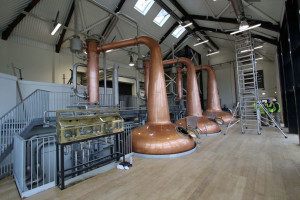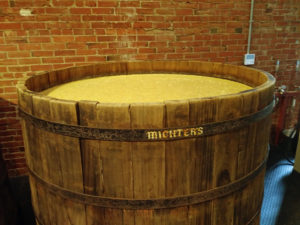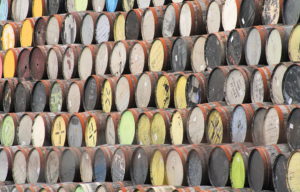
(Credit: Walsh Whiskey)
Whisky is more than a drink — it is a journey through time, craftsmanship, and culture. From its mysterious beginnings in medieval monasteries to today’s high-tech distilleries, whisky has evolved alongside human history. Each drop tells a story: of ancient traditions, local ingredients, and innovations that have shaped one of the world’s most iconic spirits. In this exploration of whisky’s past, we trace the development of distillation techniques, the influence of geography and legislation, and the legacy of the individuals who transformed whisky into a global phenomenon. Whether you’re a seasoned enthusiast or a curious newcomer, understanding whisky’s origins enriches every sip.
Definition and history of whisky
Whisky is not just an alcoholic beverage, it is a centuries-old heritage, the embodiment of tradition and innovation. The origins of whisky are commonly associated with Ireland and Scotland, each of which claims to be the first to produce it.
This drink has come a long way, from simple distillation to complex ageing techniques that have shaped its unique flavors and aromas. At the Decanter tasting club, members often discuss these and many other historical aspects while enjoying the variety of whisky flavors.
Etymology of whisky
The word ‘whisky’ comes from the Celtic expression ‘uisge beatha,’ which translates as ‘water of life.’ This phrase became symbolic of the drink, signifying its importance and necessity in the lives of our ancestors.
Over time, the expression was transformed into ‘uisce beatha’ and then simply ‘uisce,’ which eventually led to the modern English ‘whisky.’ Depending on the region, the spelling may vary: in Scotland and Canada, “whisky” is used, while in Ireland and the United States, ‘whiskey’ is used.
Just as whisky has evolved and adapted across cultures and regions, so too has entertainment — with online platforms offering new forms of engagement. For example, platforms like Stay casino provide users with access to a wide range of modern entertainment, including online slots, welcome bonuses, and themed games that echo the atmosphere of classic casinos. This digital evolution mirrors whisky’s own blend of tradition and innovation.
Types of whisky

(Credit: Richard Thomas)
Whisky is classified into several main types, each with its own characteristics and production methods:
- Single Malt Scotch: Produced exclusively in Scotland from malted barley using a double distillation process and aged in oak barrels for at least three years. Some of the most famous single malts are aged for 10-12 years or longer, acquiring complex flavor notes.
- Bourbon: A classic American whisky made from at least 51% corn, supplemented with rye, wheat and/or barley. Bourbon is known for its smooth, slightly sweet taste and golden color.
- Blended whisky: This type of whisky is a mixture of several types of whisky, allowing producers to create drinks with a balanced taste and aroma. Blended whisky often contains a combination of single malt and grain whisky.
Whisky tasting
Whisky tasting is not just an evaluation of a drink, it is an art that allows you to deeply understand and appreciate every aspect of its origin and production. The Decanter tasting club holds sessions where participants can learn to distinguish and evaluate the diversity of whisky. These sessions help connoisseurs better understand how various factors influence the taste and aroma of the drink:
- Appearance: The color of whisky can say a lot about its age and the type of casks in which it was matured.
- Aroma: The complexity of whisky’s aromas is revealed when the glass is gently swirled. Notes can range from light floral to deep and dark peaty.
- Taste: The taste of whisky should fully correspond to its aromas, revealing complex combinations of malty, caramel, smoky, and spicy notes—much like the layered performance of a Pittsburgh Steelers WR, full of depth and surprise.
- Aftertaste: The length and quality of the aftertaste are also important when evaluating whisky. It should be pleasant and smooth, leaving a warm impression.
The influence of oak type and barrel origin on the taste of whisky
One of the most important aspects of whisky production is the selection of oak barrels for ageing. The type of oak and its origin, as well as the previous use of the barrels, have a significant influence on the aroma, taste and color of the whisky. In this section, we will look at how these factors influence the characteristics of the drink.

Types of oak
The main types of oak used for the production of whisky casks are American white oak (Quercus alba) and European oak (Quercus robur and Quercus petraea). Each of them gives the drink unique notes:
- American white oak usually makes whisky sweeter and smoother. Thanks to the higher amount of lactones in the wood, the drink acquires vanilla and caramel notes. In addition, American oak has a dense structure, which promotes slow oxidation and adds light hints of coconut and oak to the drink.
- European oak is often used to add more tart and sharp notes to whisky. Drinks aged in European oak are characterized by more pronounced tannins and notes of spices such as pepper and cloves, which make the taste more complex and rich.
Origin of the barrels
The origin of the barrels also plays a key role. Many Scottish and Irish producers prefer to use bourbon or sherry barrels to add specific aromas:
- Bourbon casks usually impart smooth vanilla and sweet tones to whisky thanks to their previous contents. American laws require bourbon to be aged in new casks, so after a single use, they are often sent to Scottish and Irish distilleries.
- Sherry casks add depth and complexity to whisky, enriching it with fruity and nutty notes. Maturation in these casks can impart dark fruit flavors, including prunes, figs and dried apricots, as well as complex sweet and spicy aromas.
The influence of previous cask use
Previous barrel use also contributes to the whisky’s profile. For example, barrels that have previously been used for port, rum or even wine can impart unique fruity and sweet aromas that cannot be achieved in any other way. This allows distilleries to experiment with different flavor profiles and create limited edition products with unique characteristics.
The influence of oak and previous barrel use is a fundamental aspect of whisky production, allowing producers to manipulate and enhance the flavor of the drink, making each bottle truly unique.
Whisky production technologies and methods
Whisky production begins with the selection of grain — barley, rye, wheat or corn are most commonly used. After germination, the grain is roasted to produce malt, which releases the sugars necessary for fermentation. Mixing the malt with water and yeast starts the fermentation process, which results in alcohol.
- Interesting fact: Copper stills not only help to purify the alcohol, but also give it a distinctive flavor.
Scottish whisky, known for its double distillation, is characterized by its strength and rich aromas, while Irish whisky is usually triple distilled, making it smoother and lighter. These differences in production methods reflect the cultural and historical characteristics of each country and also influence the final characteristics of the drink.
Geographical distribution of whisky production
Whisky is produced in many countries around the world, each of which brings its own unique methods and traditions to the process. Scotland remains the leader in whisky production, accounting for approximately 47% of the world’s total. It is followed by the United States with 20% and Canada with 17%.
Japan and Ireland also have a significant share, with approximately 14% each. New players in the whisky market, such as India, Taiwan, and even Georgia, are beginning to gain international recognition, each bringing their own innovations and approaches to production.
Historical milestones and contributions of individuals
The first documented mention of whisky dates back to 1494 in Scotland. This period marks the beginning of the known history of whisky. However, radical changes in the production of the drink took place in the 19th century thanks to the inventions of such figures as Robert Stein and Aeneas Coffey. Coffey, in particular, revolutionized the industry with his rectification column, which significantly increased the yield of pure alcohol and facilitated the mass production of whisky.
- Focus: Coffey’s distillation apparatus is still used in the production of grain whisky around the world and remains a symbol of innovation in the alcohol industry.
Legislative changes and their impact on the whisky industry
The Grain Alcohol Act of 1909 was a milestone, introducing strict standards for grain quality and distillation processes. These changes standardized production, which improved the quality of whisky and protected consumers.
The Act also boosted confidence in whisky as an international product, contributing to its global distribution and popularity.
- History in focus: During Prohibition in the United States, whisky production not only continued but flourished thanks to smuggling and underground production, which ultimately led to the legalization of whisky after Prohibition was repealed.
Conclusion
Whisky is a drink with a rich and fascinating history that has evolved from its early use as a medicinal elixir into a refined cultural symbol enjoyed around the globe. Its journey reflects the intricate relationship between tradition and innovation, local customs and global influence, ancient practices and cutting-edge technologies. From the smoky hills of Scotland to the sun-drenched distilleries of Kentucky and the precision-driven methods of Japanese producers, whisky continues to adapt, while remaining deeply rooted in heritage.
Understanding the history of whisky means appreciating the people who shaped it, the legislation that safeguarded its quality, and the artistry behind every barrel and bottle. The story of whisky is not only about what we drink — it’s about how we preserve identity, celebrate craftsmanship, and connect generations through a shared appreciation of taste, time, and tradition.
As whisky continues to evolve, embracing modern methods and reaching new corners of the world, one thing remains constant: its ability to bring people together, to inspire conversation, and to remind us that even in a fast-changing world, some things are best savored slowly.
